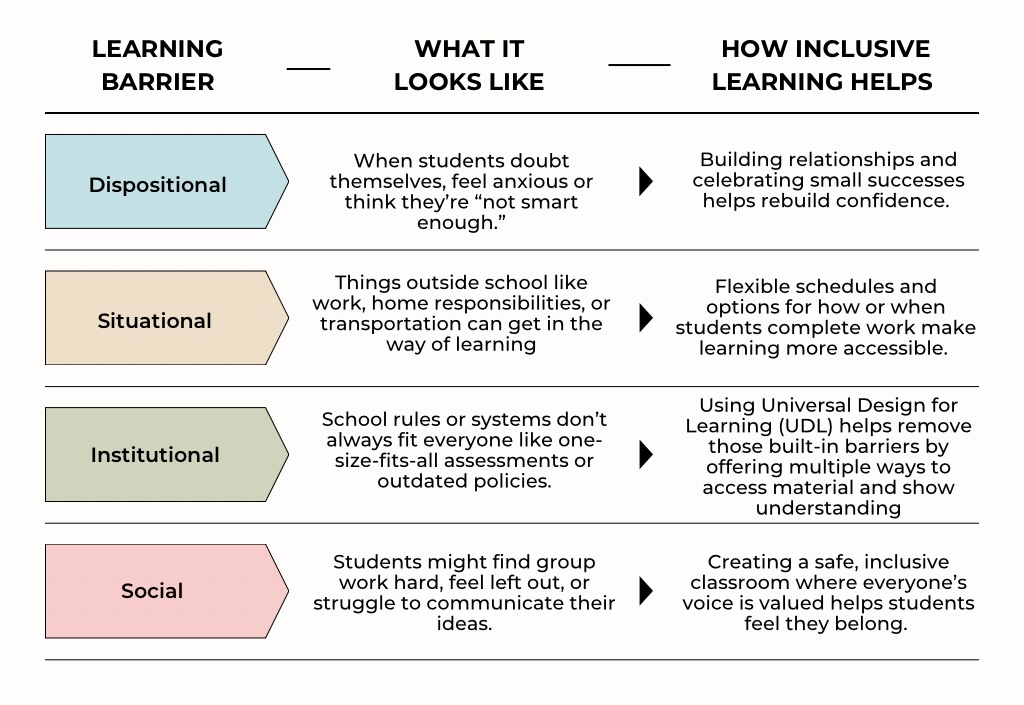“Kids do well if they can” – Ross Greene
I just want to start this blog post with a quote my friend shared with me near the end of our education degree. I believe she heard it from one of her mentor teachers, and it completely shifted the way I think, even though it was so simple. She told me to remember that “kids do well if they can.”
This is one of Greene’s core ideas, meaning that when children aren’t doing well, it’s not because they don’t want to, it’s because they don’t yet have the tools or skill set to do so. It made me reflect on my own learning too. If I’m being honest, I’m still working on developing that determination to figure things out when I don’t already know how to do them. Greene explains that this idea pushes back on the belief that “kids do well if they wanna,” which is about as logical as saying someone can choose their emotions.
My point is, this module has me excited to keep deep diving into ways to constantly have the learner in mind.
Universal Design for Learning (UDL)
UDL focuses on addressing the root of a problem rather than applying a temporary fix, which leads to more sustainable and supportive learning environments. It helps me design lessons that include a variety of ways for students to access and engage with content. It embraces the fact that one size does not fit all.
This approach is important because it challenges the barriers that naturally arise in learning and gives educators a strong framework for supporting every student.
Inclusive Learning
Some strategies educators can use to design for inclusion include offering “show what you know” style assessments, where students can express their understanding in their own way rather than fitting into rigid expectations. I really like how this approach promotes thorough scaffolding for the best outcomes but overall, it’s about giving students what they need to succeed.
The lecture got me thinking about learning barriers, so I wanted to include a table to show how inclusive learning can help address them.

Synchronous and Asynchronous Learning
As mentioned in the lecture, synchronous learning is great for connection and community, both key components of meaningful learning. Meanwhile, asynchronous learning offers flexibility, which is valuable for students juggling busy lives.
A balance between the two supports both learning styles: some live interaction for engagement and belonging, and some self-paced opportunities for those who need more processing time. Even if a student prefers one over the other, the balance (if done correctly) can help students move into their “growth zone” which is just outside their comfort zone.
Principles of Effective Online Education
Effective online learning should be clear, organized, and accessible. Expectations need to be visible and easy to understand. Using UDL principles helps make this possible by providing multiple ways for students to access materials and show their understanding.
Interaction and Presence
Interaction and presence are huge pieces of the puzzle for online learning. Students need to connect with the content, their peers, and their instructor. Together, these interactions make learning more meaningful, engaging, and inclusive.
Before wrapping up, I wanted to share this video from Shelley Moore. While I was exploring the British Columbia education website for inclusive education resources, I was so happy to see that they included Shelley’s 5 Moore Minutes videos. These have been a staple throughout my BEd journey, and her insights have really helped me understand some of the most important parts of being an educator.
Final Thoughts
Coming back to that quote, “kids do well if they can,” I really think this whole module connects to that idea. When we design learning with inclusion and engagement in mind, we’re giving students the tools to succeed and not just expecting them to.
As teachers, our job is to take away barriers, not add more.


Leave a Reply